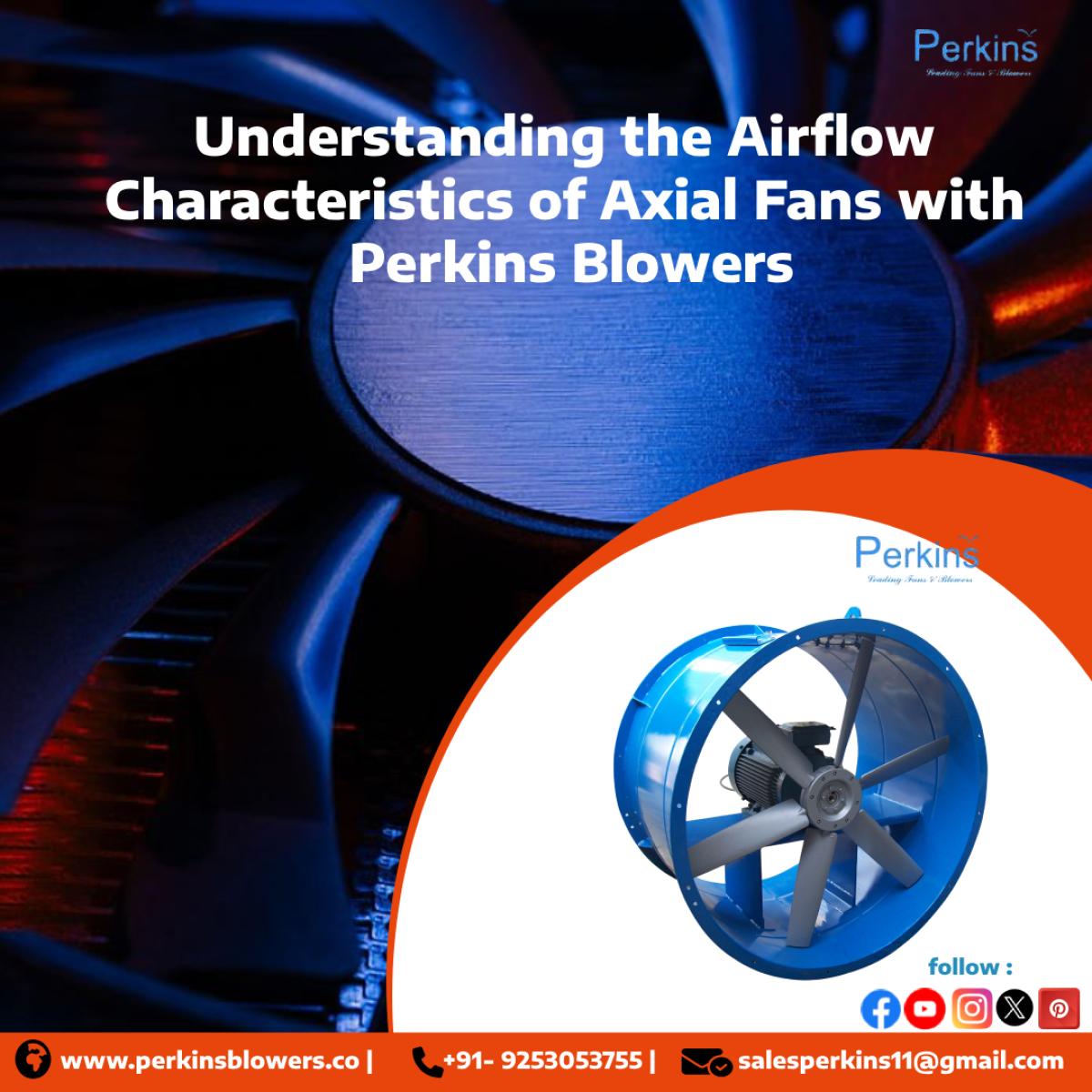
When it comes to industrial ventilation, cooling, and exhaust applications, axial fans stand out as one of the most commonly used solutions. Their design and efficiency make them suitable for a wide range of industries—from HVAC systems to power plants, chemical factories, and even large-scale commercial buildings. As a trusted axial fan manufacturer in India, Perkins Blowers has years of expertise in designing high-performance fans that deliver reliable and consistent airflow.
In this blog, we will explore the unique airflow characteristics of industrial axial fans, why they matter, and how Perkins Blowers ensures its products meet the demanding needs of modern industries.
What Are Axial Fans?
An axial fan is a type of fan where the air flows parallel to the shaft around which the blades rotate. Unlike centrifugal fans, which push air in a radial direction, axial fans move air in a straight path along the axis. This design allows axial fans to deliver a large volume of air at relatively low pressure, making them perfect for ventilation, cooling, and air circulation purposes.
Read more : Axial Fans Explained: The Science Behind Streamlined Airflow
Key Airflow Characteristics of Axial Fans
Understanding the airflow characteristics of axial fans is essential for selecting the right fan for your application. Perkins Blowers focuses on these characteristics to design efficient, durable, and high-performance fans:
1. High Volume, Low Pressure
Axial fans are best known for their ability to move large quantities of air with minimal energy consumption. They work effectively in systems where low-pressure airflow is sufficient, such as ventilation ducts, cooling towers, and fresh air circulation. This makes them more energy-efficient compared to centrifugal fans when handling large volumes.
2. Directional Airflow
The airflow of an axial fan is straight and parallel to the axis of rotation. This directional airflow ensures that the fan provides focused ventilation to the desired area. At Perkins Blowers, our designs enhance this airflow efficiency with precisely engineered blades, ensuring smooth and consistent performance.
3. Variable Airflow Control
Modern axial fans can be equipped with adjustable pitch blades, allowing users to control the airflow according to the requirements of their application. This feature helps industries save energy and optimize performance. Perkins Blowers offers both fixed and adjustable pitch fans, catering to diverse operational needs.
4. Pressure vs. Flow Relationship
Axial fans exhibit a unique pressure-flow curve. As airflow volume increases, static pressure decreases, and vice versa. This relationship must be carefully balanced when designing ventilation systems. Perkins Blowers uses advanced aerodynamic analysis to ensure each fan delivers the right balance of pressure and flow for its intended use.
5. Efficiency at Lower Pressures
Axial fans operate most efficiently at low to medium pressure ranges. If the system requires high static pressure, a centrifugal fan may be better suited. However, for large-scale air movement, axial fans remain the top choice due to their efficiency.
6. Noise Characteristics
Airflow patterns directly affect the noise levels of axial fans. Poorly designed blades can cause turbulence, leading to high noise. Perkins Blowers minimizes this issue by designing fans with aerodynamic blade profiles that reduce turbulence, providing quieter operation without compromising airflow.
7. Reversible Airflow
One of the advantages of axial fans is that they can be designed for reversible airflow, which is highly useful in industries requiring bidirectional ventilation, such as mining or tunnel applications. Perkins Blowers offers reversible axial fans with robust construction to handle such demanding environments.
Applications of Axial Fans Based on Airflow Characteristics
Because of their airflow patterns, axial fans are widely used across industries. Here are a few examples:
-
HVAC Systems: Ensuring smooth circulation of fresh and conditioned air.
-
Cooling Towers: Moving large amounts of air to regulate water cooling systems.
-
Industrial Ventilation: Removing heat, dust, or fumes from factories and workshops.
-
Agriculture: Providing fresh air circulation in poultry farms and greenhouses.
-
Mining & Tunnels: Ensuring safe working conditions with proper ventilation and reversible airflow systems.
At Perkins Blowers, our axial fans are tailored to meet these specific demands, ensuring durability, reliability, and energy savings.
Also read : How to Choose the Best Axial Flow Fan for Industrial Use
